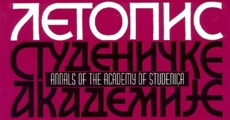| |
EFFECTS
AND TOXICITY OF COMBINATION VS. SEQUENTIAL CHEMOTHERAPY IN COLORECTAL
CANCER: IS THERE STILL A ROLE OF 5-FUL/LV MONOTHERAPY?
Popov
I.
Institute
of Oncology and Radiology of Serbia, Belgrade, Serbia and Montenegro
|
|
| |
ABSTRACT
As
the number of active drugs for colorectal cancer increases, we continually
revisit the question of how best to integrate them. Ideally we should
base our decisions on the results of clinical trials but unfortunately
these can only explore a limited number of options. Hence, we need
to test not only specific regimens but also principles, the latter
serving to guide our use of drugs even when the specific approach
may have not been tested. Traditionally, medical oncologists have
made strides by empirically combining the available chemotherapy
agents into treatment regimens. These regimens are generally associated
with increased response proportion in comparison to single agent
administration but the usual price is an increase in acute toxicity.
Importantly, these heightened response proportions only occasionally
lead to improved time to progression or overall survival. In addition,
it is increasingly clear that quality of life, the immediate goal
of palliative therapy for metastatic colorectal cancer, may be better
with single agent regimens as compared to combinations. Aim: We
investigated whether sequential chemotherapy, which consists of
only bolus plus infusional 5-fluorouracil/folinic acid, could be
comparable concerning overall survival to sequential chemotherapy
that consists of bolus 5-fluorouracil/folinic acid, plus "new-generation"
drugs like CPT-11 or oxaliplatin. Patients with histologically verified
locally advanced disease and/or metastatic colorectal adenocarcinoma,
without possibility for surgical resection, were eligible for the
study. Treatments: Cohort A - Mayo Clinic Regimen (MCR) in first
line, "de Gramont" regimen in second line; Cohort B - MCR in first
line, CPT-11 (350mg/m2) in second line; Cohort C - MCR in first
line, oxaliplatin (85 mg/m2) plus "de Gramont" regimen in second
line. Total of 89 patients received first plus second line chemotherapy
and all of them have been analyzed for survival. Number of patients/cohort:
A-32 B-27; C-30. The median survival time of the patients was 15,
11, and 17 months for the patients in cohorts A, B, and C, respectively.
Survival of the patients in cohort C was significantly better than
survival of the patients in cohort B (log-rank test, p=0.04). There
was not a significant difference in overall survival between the
cohorts A vs. C (log-rank test, p=0.52) and B vs. C (log-rank test,
p=0.27). It is conceivable that infusional HD 5-FU could serve as
a basis for first and second-line protocols in which other drugs
are added to this regimen. Infusional 5-FU plus oxaliplatin in sequential
pattern of application after bolus 5-FU has the best overall survival
in comparison to other cohorts. CPT-11 applied as a single drug,
was not effective enough in comparison to other treatment options. |
-
|
| |
Keywords:
Colorectal cancer, Sequential chemotherapy, Oxaliplatin, CPT-11,
Infusional 5-fluorouracil |
|
|

